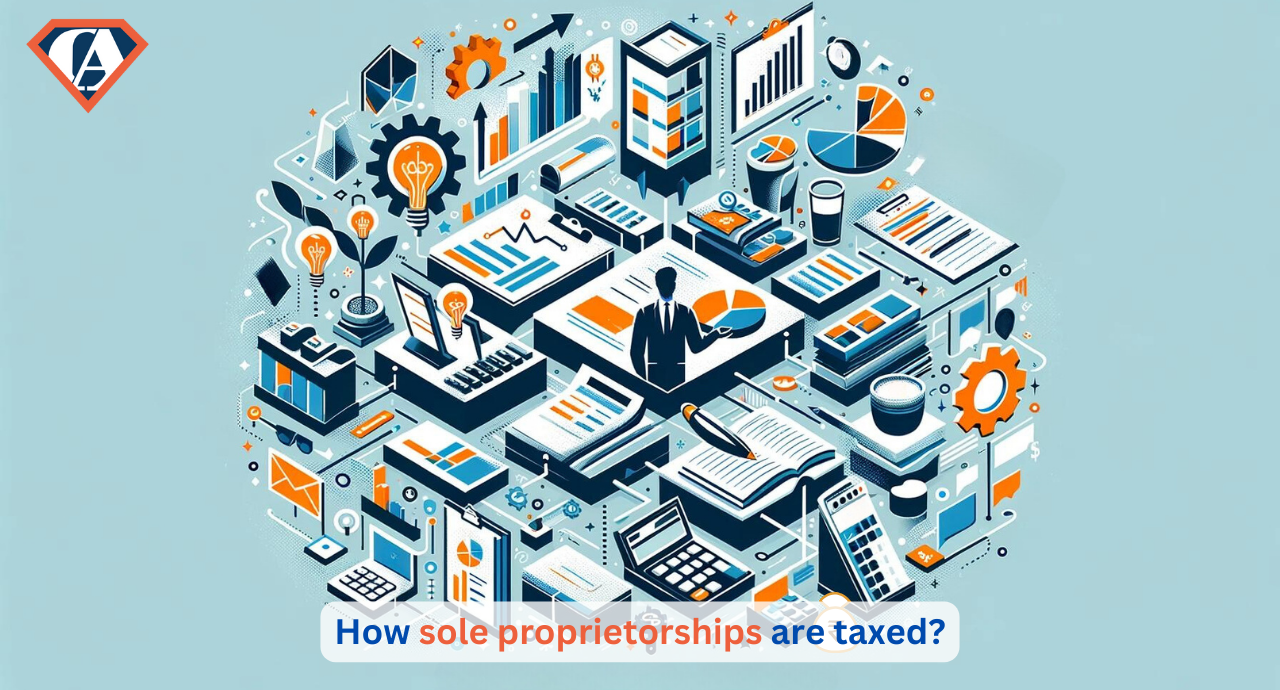Taxation Mechanism For Online Sellers and Vendors
- Posted By SuperCA
- On 28 March

Over the past few years, there has been a tremendous surge in expansion and penetration of various E-commerce platforms like amazon, flipkart, snapdeal with great momentum. This growth has been driven by factors such as the increasing use of digital technology, higher internet penetration, and a rising middle-class population with greater disposable incomes.These platforms also provide an opportunity for small-scale traders to become sellers and reach a broader audience. However, with great power comes great responsibility. These online sellers must abide by compliance rules, which means keeping accurate books of accounts, disclosing the sources of their revenue, making claims for deductions, and ensuring that Income Tax and GST laws are followed.
Income Tax Threshold Limit for Online Sellers
Income Tax Act,1961 states that if an individual’s total income exceeds a certain threshold amount, they must file ITR. This demand also applies to online vendors selling on Amazon, Flipkart, or Snapdeal. The seller is required to file an income tax return by the deadline if their total income is greater than the threshold amount mentioned. The following describes the threshold limit for AY 2023–2024 :
|
Age Limit |
Threshold limit |
|
Those younger than 60 years old |
Rs. 2.5 lakh |
|
Between 60 to 80 years old |
Rs. 3 lakh |
|
Over 80 years old |
Rs. 5 lakh |
Organizational Structure and Taxes
Determining business structure is the initial step for internet vendors. They have the option to conduct business as a single proprietorship, partnership, limited liability partnership (LLP), or private limited company. The effects on taxes of each structure are different.
|
Organizational Structure |
Tax Mechanism |
|
Sole Proprietorship: |
For taxation purposes, a sole proprietorship consists of the business and the owner as one and the same entity. As a result, the business's income is taxed as the owner's personal income. The owner must submit an ITR under the personal category (ITR 1). |
|
Partnership |
According to the profit-sharing ratios of the partners, the income generated by the company is distributed among them. Each spouse is required to record their respective share of income on an ITR under the individual category (ITR 2) |
|
LLP |
An LLP is taxed separately from other businesses. The LLP's income is taxed at a fixed rate of 30%, and the partners are not individually responsible for the debts of the LLP. An ITR must be submitted by the LLP under the company category (ITR 5).
|
|
Private Limited Company |
A private limited company is taxed separately from other types of businesses. The corporation pays a flat tax of 25% on all of its income. Under the corporate category, the business must submit an ITR (ITR 6).
|
Prescribed Forms for Filing ITR for Online Sellers
The seller must choose the right ITR form to file their return after deciding on their business structure. The following ITR forms are applicable to internet sellers:
|
Form |
For Whom? |
|
ITR 1 (Sahaj) |
For people with salaries, one-home properties, and other sources of income (excluding lottery winnings and income from racehorses). |
|
ITR 2 |
For individuals and HUFs (Hindu Undivided Families) not engaging in any proprietorship-based company or profession. |
|
ITR 3 |
For people and HUFs running a sole proprietorship-based business or profession.
|
|
ITR 5
|
For Limited Liability Partnerships (LLPs), Association of persons (AOPs), Body of Individuals (BOIs), Trust and people under IT Act. |
|
ITR 6 |
For private limited corporations, |
Sources of Income & its Reporting
Online vendors make money through a variety of channels, including direct sales through marketplaces like Amazon, Flipkart, and Snapdeal as well as interest earned on customer deposits. They must be honest about all of their revenue on the ITR or face penalties.
Online vendors must reveal their total revenue from selling on Amazon, Flipkart, and Snapdeal. The term "gross sales" refers to the sum of the selling price of the goods, the cost of shipping, and any other fees imposed by the online marketplace. After deducting these expenses from total sales, the seller will have the net sales amount to submit on their income tax return. However, there is a commission fee deducted by the internet marketplace. For instance, if an online vendor sold goods on Amazon for Rs. 10,000 and Amazon deducted a 5% commission fee, or Rs. 500, the vendor would need to record net sales of Rs. 9,500 in their ITR.
Deductions and Expenses
Rent for a warehouse or office space, advertising charges, packaging and shipping costs, and other expenses are only some of the costs that online merchants incur in order to keep their businesses running. If they itemize their deductions, they can reduce their taxable income by the amount of these expenditures.
In order to claim these deductions, online merchants must maintain a clear financial record-keeping system and hang on to all relevant invoices and receipts. Further, they should verify that the expenditures are business-related and not private.
TDS (Tax Deducted at Source)
Tax deducted at source (TDS) is a form of tax withheld by the payer and deposited to the government on behalf of the payee. TDS is withheld from the commission payments granted to sellers on online marketplaces like Amazon, Flipkart, and Snapdeal.
The seller's Form 26AS reflects the TDS deducted, and in order to avoid paying taxes twice, they must claim this TDS credit in their ITR. The seller may request a refund of the excess TDS if it was deducted in excess of the tax due.
GST (Goods and Services Tax)
In accordance with the Goods and Services Tax (GST) regulations in India, e-commerce sellers who utilize platforms like Amazon are obligated to register for GST and adhere to its guidelines and requirements. If an online seller's revenue exceeds a certain threshold, they must also abide by GST requirements. The threshold limit for GST registration is Rs. 20 lakh for service providers and Rs. 40 lakh for goods sellers as of March 2023.
Compliance with the GST laws involves maintaining accurate transaction records and filing regular returns. Non-compliance can result in penalties and other legal consequences
Conclusion
Online sellers must make sure they choose the proper ITR form, appropriately report their income and expenses, and claim all permitted deductions when filing their forms. They must also seek the opinion of a tax expert for specific guidance regarding their tax situation. At SuperCA, you’ll get one-stop solutions to all of your filing and tax-related questions from a youthful, motivated staff of tax and finance specialists. Please contact us for a no-cost consultation.





